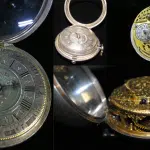
The Mysterious Cervicorn: Nature’s Unicorn Deer
Featured in Ripley's Believe It or Not!

This Massachusetts white-tailed deer proves that unicorns really do exist—but he probably wasn’t born like this. This “cervicorn” once belonged to the author of this article, and is now in the Ripley’s oddity collection!
Male deer of most species typically shed their antlers every year, then grow a new set. Hunters often seek the biggest, most impressive rack. This time, the hunter got a weird one instead.




